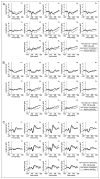Time-dependent neural processing of auditory feedback during voice pitch error detection
- PMID: 20146608
- PMCID: PMC3268676
- DOI: 10.1162/jocn.2010.21447
Time-dependent neural processing of auditory feedback during voice pitch error detection
Abstract
The neural responses to sensory consequences of a self-produced motor act are suppressed compared with those in response to a similar but externally generated stimulus. Previous studies in the somatosensory and auditory systems have shown that the motor-induced suppression of the sensory mechanisms is sensitive to delays between the motor act and the onset of the stimulus. The present study investigated time-dependent neural processing of auditory feedback in response to self-produced vocalizations. ERPs were recorded in response to normal and pitch-shifted voice auditory feedback during active vocalization and passive listening to the playback of the same vocalizations. The pitch-shifted stimulus was delivered to the subjects' auditory feedback after a randomly chosen time delay between the vocal onset and the stimulus presentation. Results showed that the neural responses to delayed feedback perturbations were significantly larger than those in response to the pitch-shifted stimulus occurring at vocal onset. Active vocalization was shown to enhance neural responsiveness to feedback alterations only for nonzero delays compared with passive listening to the playback. These findings indicated that the neural mechanisms of auditory feedback processing are sensitive to timing between the vocal motor commands and the incoming auditory feedback. Time-dependent neural processing of auditory feedback may be an important feature of the audio-vocal integration system that helps to improve the feedback-based monitoring and control of voice structure through vocal error detection and correction.
Figures





References
-
- Blakemore SJ, Rees G, Frith CD. How do we predict the consequences of our actions? A functional imaging study. Neuropsychologia. 1998;36:521–529. - PubMed
Publication types
MeSH terms
Grants and funding
LinkOut - more resources
Full Text Sources

